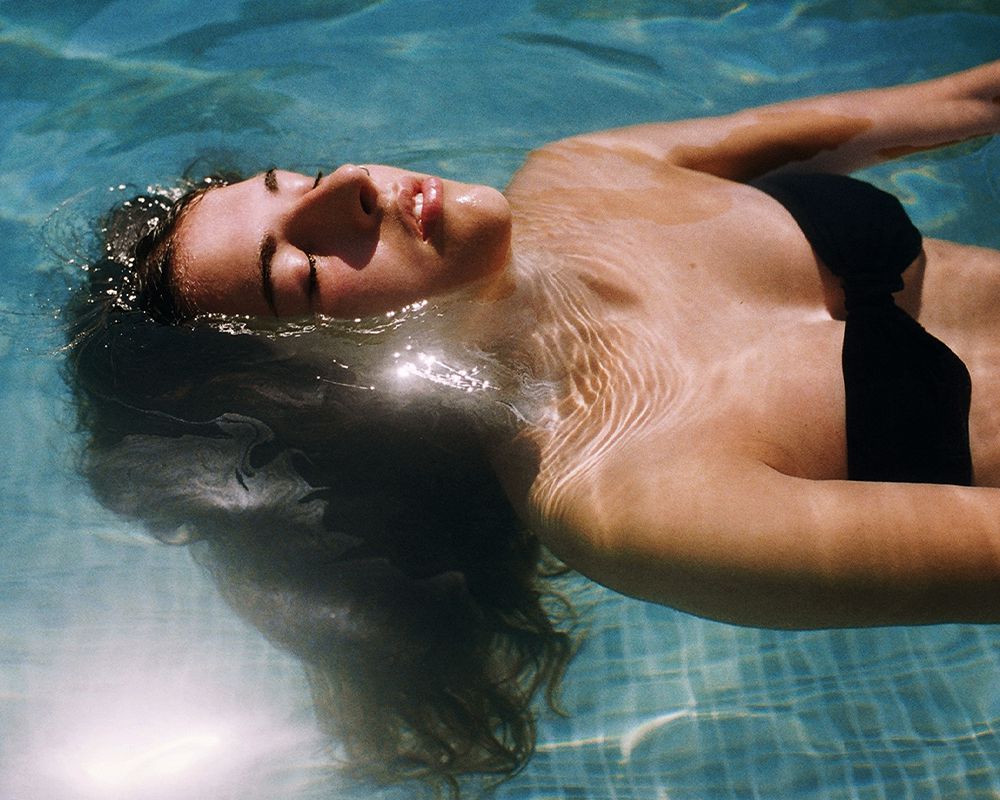There’s no shortage of things to love about summer, but a good pool day tops the list. The only downside? It’s not always so good for your skin and hair. Along with the potential for sun-induced skin damage (insert the obligatory ‘don’t forget to wear sunscreen’ reminder here), a dip in the pool can also take a serious toll on your hair. The culprit? Chlorine, a common chemical found in most pool water, can wreak havoc on everything from the texture to the color of your hair.
Luckily, there are ways you can prevent these issues from happening in the first place, as well as undo the damage if it does occur. Ahead, Rex Jimieson, a colorist and color educator at Maxine Salon in Chicago, celebrity hairstylist Danielle Priano, Kerry Yates, a trichologist at Colour Collective, and Kristen Fleming, color director at Chicago’s 3rd Coast Salon, weigh in on how to get chlorine out of hair.
Meet the Expert
- Rex Jimieson is a colorist and color educator at Maxine Salon in Chicago.
- Danielle Priano is a celebrity hairstylist.
- Kerry Yates is a trichologist at Colour Collective.
- Kristen Fleming is the color director at Chicago’s 3rd Coast Salon.
What Chlorine Does to Your Hair
Long story, short—nothing good. “Chlorine is commonly used as a disinfectant or bleaching agent,” explains Yates. “While it does a phenomenal job of ensuring our pool water stays safe and germ-free, it can wreak havoc on our skin and hair.” She says that because it’s a bleaching agent, it changes the hair’s natural melanin or pigment profile. More specifically, when it intermingles with minerals in the water, copper, in particular, it can leave the hair with a greenish tint, she explains. While chlorine can cause changes in any hair color, they’re most noticeable in blonde and lighter tones.
Chlorine also breaks down the cuticle—the outermost protective layer—of the hair shaft, says Fleming. This, in turn, leaves hair dry and brittle and ups the likelihood of even more color changes. She explains that when the hair shaft is compromised and the cuticle is open, dye molecules can easily slip out. This holds especially true for (non-natural) redheads since those color molecules are the biggest and the quickest to fade out. Chlorine also strips away the hair’s natural oils that give it shine and leave it feeling pliable and healthy, adds Yates.
Hair that’s already compromised—i.e., damaged or previously lightened—will be most susceptible to the above changes. However, Jimieson says, “All hair, colored or not, is subject to the damage and dryness caused by chlorine.”
How to Prevent Chlorine From Getting in Your Hair
As in most cases, the best offense is a good defense, so start by trying any of these preventative methods.
Wear a Swim Cap
Sure, it may look a little goofy, but many of the experts we spoke with say it’s a super smart move: “Wearing a swim cap in the pool is a great way to create a barrier between your hair and the chlorine,” says Priano.
Wet Your Hair Pre-Swim
No swim cap? “Simply saturate your strands with water before jumping in the pool,” Yates suggests. The water takes up space in the hair, filling in porosity and limiting chlorine absorption.
Use Coconut Oil or a Leave-in Conditioner
While water alone will help, you can create even more of a protective barrier by working a small amount of coconut oil throughout your strands. “Because coconut oil is a larger oil molecule than many other oils, it will sit on the surface of the hair where it can act as a barrier, rather than penetrating into the hair shaft,” Jimieson explains.
If coconut oil isn’t an option, Fleming says coating hair with a leave-in conditioner is also helpful. She likes the UNITE Hair 7Seconds Detangler ($33), which has the added benefit of offering UV protection as well.
How to Get Chlorine Out of Your Hair
If doing any or all of the above isn’t feasible, and chlorine does get into your hair, here’s what you can do to get it out. And, even if you did follow the aforementioned tips, these aftercare moves are still a good idea.
Wash Your Hair Immediately After Swimming
The sooner you can get the chlorine out, the better. Ideally, you want to wash your hair as quickly as possible after getting out of the pool, says Priano. If you tried the coconut oil trick, towel off the oil and apply shampoo without rewetting it. “The excess oil is sitting on the hair’s surface with the chlorine attached,” explains Jimieson. “Adding water before the first shampoo will make it harder to get the chlorine and oil off the hair.”
Make sure you’re giving your scalp enough TLC when you wash. Chlorine can dry out the scalp just as much as it can the hair, notes Yates. Be sure to rinse the hair and the scalp thoroughly and massage the scalp to help distribute the natural sebum, she suggests.
Choose the Right Shampoo
If your hair hasn’t changed color and doesn’t feel particularly dry, use a moisturizing, sulfate-free shampoo, such as Herbal Essences Bio: Renew Honey & Vitamin B Shampoo ($6). Otherwise, opt for a clarifying formula like Odele’s Clarifying Shampoo ($12).
Follow with a Mask
Yates recommends using a richer, more reparative hydrating masque to help combat chlorine’s drying effects. She likes the Innersense Organic Beauty Hydrating Hair Mask ($30). Fleming notes this is an especially important step since clarifying shampoos can be somewhat drying.
Reach for a Clarifying Treatment
When all else fails, Jimieson and Fleming suggest visiting a salon to get a Malibu C clarifying treatment to remove chlorine build-up. “It’s hands down the best product I’ve used, and as a former swimmer, I can tell you that nothing else works as well,” says Fleming. The at-home version—Malibu C Swimmers Wellness Hair Remedy ($6)— is another option you can use once or twice monthly.
How to Prevent (and Heal) Sun-Damaged Hair










